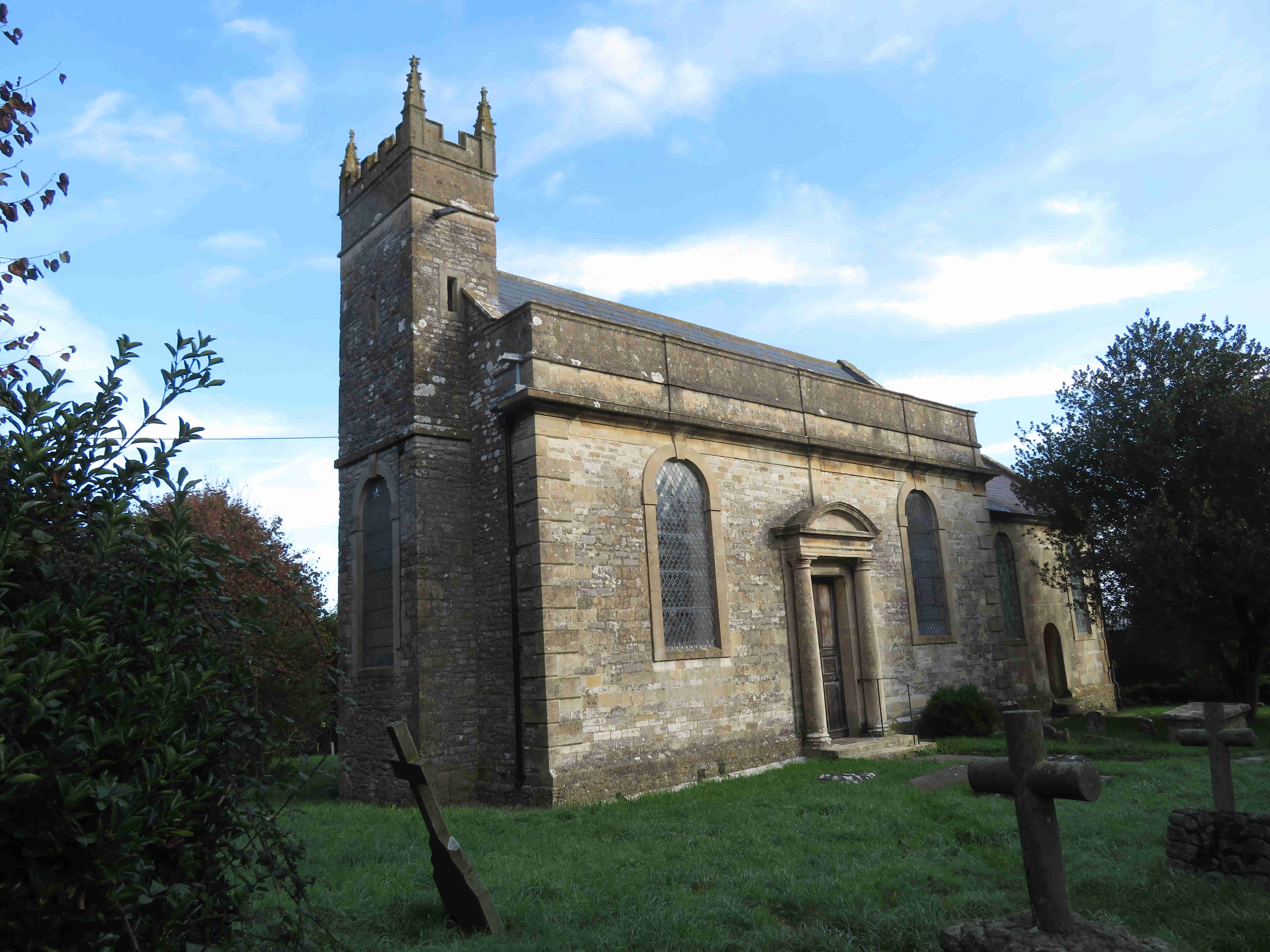
Despite its small size, there is an entry for Foxcote in the Doomsday Book of 1086 when it had 3 villagers, 6 smallholders, 2 cottagers, 3 slaves, 20 cattle, 29 pigs and 177 sheep. From the Imperial Gazetteer of England and Wales by John Marius Wilson (1870-72): FORSCOTE, or Foxcote, a parish in Frome district, Somerset; near the Bath canal, 6½ miles SW by S of Bath r. station. Post town, Midsomer-Norton, under Bath. Acres, 580. Real property, £799. Pop., 46. Houses, 11. The property is divided among a few. The living is a rectory in the diocese of Bath and Wells. Value, £150.* Patron, Sir J. Smyth, Bart. The church is recent.
The village is administered by Hemington, Hardington & Foxcote Parish Council.
The church of St James the Less at Foxcote was rebuilt in 1721. It is Grade II* listed by English Heritage which describes it as ‘Early C18 incorporating C15/C16 turret. Coursed and squared rubble and ashlar, moulded cornice, parapet with coping, slate roof, coped verges. Nave, chancel, west bell turret.’ The church forms part of the ‘St J’s Group’, a group of parishes which also includes St John’s, Peasedown St John , St Julian's, Shoscombe and St Julian the Hospitaller, Wellow.
The earliest register available has baptisms (1691-1816), burials (1695-1812) and marriages (1697-1751). The entries of different types are mixed with, for some periods, burials on the left-hand pages and baptisms on the right-hand-page. The burial entries are not always in chronological order. From the end of this register ‘The New Church open’d the 10th of December 1721 ye 2d Sunday in Advent.’ The benefice’s website gives the fees for searching registers and in 2024 this had ‘Searching registers of baptism or burials (including the provision of one copy of any entry therein) for up to one hour, £36 and for each subsequent hour or part of an hour, £36.’

Being in the North Somerset Coalfield, the economy of Foxcote and neighbouring villages was dominated by mining in the 19th century up until the mid-20th century and farming. From the Western Daily Press of 9 Jul 1864 p3 in a letter from Edward Ashman on behalf of the Foxcote and Braysdown miners and headlined ‘Foxcote Strike and Braysdown Turnout’: It was announced on Saturday last, with some parade, by the Foxcote and Braysdown managers, that the average earnings of their men the week previous to the strike were 19s 4¾d per man. This, had it been true, we consider to be good wages in our part of the country, for six days’ work. . . . If the proposed reduction had taken place at Foxcote, we infer from the managers’ own account that, instead of 19s., the men would have the noble sum of 17s 6d, for working six days and two or three nights per week.’ The letter went on to show that the wages for a week at Braysdown (six days plus three turns of overtime) was 13s. 10d. The strike lasted 18 weeks. From the Western Gazette of Sat 1 Oct 1864 p7: ‘Although the men have been liberally supported during their struggle by the miners of Wales and the neighbourhood, the have (with the exception of a few of the leaders whom the owners will not accept) bowed to the determination of the owners, conceded in every respect to their views, left the union, and have gone back to work on precisely the same conditions as when they stopped.’
There was a further dispute in 1879 arising from a proposed reduction in wages by 5 per cent (see Western Daily Press Wed 9 Jul 1879 p3). At that time the Foxcote pit was being mined 5 days a week and the average wage throughout the district was 15s. a week.
There was nationwide reporting of an accident on the Somerset & Dorset Railway– the collision of two trains - which occurred near Foxcote in 1876 in which a dozen passengers died. In the subsequent inquest the jury determined that one member of the railway staff was guilty of ‘criminal carelessness’ and severely censured two others (Western Gazette Fri 15 Sep 1876 p3). As a consequence the single track was upgraded to two track between Radstock and Wellow. The railway was closed in the 1960s.
 Burials per year
Burials per year
The list of rectors in the current register start in 1325. It shows the uniting of Foxcote with Shoscombe, the subsequent formation of a united benefice with Wellow, then the united parishes of Camerton, Dunkerton and Foxcote with Shoscombe, before becoming part of the St J’s group of parishes. The Somerset Standard of Fri 22-May-1925 p7 carried a report on a proposal to unite various parishes and has that, at that time, the population of Foxcote was 62. The press report had ‘they were strongly opposed to the inclusion of Shoscombe, for reasons which he very satisfactorily put before the meeting’, without explaining those reasons.